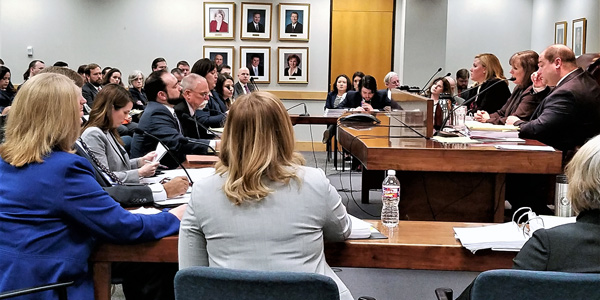By Tom Kleckner
AUSTIN, Texas — State regulators Thursday agreed to “marinate” on an administrative law judge’s order approving AEP Texas’ request to connect a pair of utility-scale lithium ion battery facilities to the ERCOT grid.
Public Utility Commission Chair DeAnn Walker said she will file a memo in the docket (46368) explaining how she would like to move forward, while Commissioner Brandy Marty Marquez asked for another chance to discuss the matter publicly and said a rulemaking may be needed.
“The PFD [proposal for decision] did make some strong points,” Marquez said. “A lot of what we’re working through is a market that we all love and how to [incorporate batteries]. They are coming, so how does that happen?”
The order is opposed by a “diverse range of market participants,” observed Emily Jolly, legal counsel for Luminant and TXU Energy, which oppose AEP’s proposal. The opponents include Calpine, the state Office of Public Utility Counsel and several consumer organizations, who argue that allowing the assets to be included in AEP’s regulatory base would harm competition.
“The goal of competition is to minimize regulatory facilities, not encourage them to proliferate,” Jolly said. “What the PFD does not explain is why preserving the market structure is beneficial. Competition fosters innovation and efficiency. We’ve seen that play out” in ERCOT.
Attorney Kerry McGrath, representing AEP, said the batteries would be used “very, very infrequently. Twelve times a year, on average.” They would also not be used for commercial activities, he said.
AEP filed its application in 2016. ALJ Stephanie Frazee’s October decision would allow the facilities to be classified as distribution assets and included in AEP’s cost-of-service rates.
The company wants to install the 1-MW and 50-kW battery facilities in remote areas of West Texas, setting them to automatically discharge during an outage or to serve additional loads. It has proposed the energy be accounted for as “unaccounted-for energy (UFE),” which ERCOT defines as the difference between the system’s total generation supply and the total system load plus losses.
“By allowing these facilities to be settled through UFE, you would be charging one set of customers when the battery is charged, then give free energy away to another set of customers,” said attorney Katie Coleman, speaking for the Texas Industrial Energy Consumers trade association. “The settlement mechanism was never intended for this purpose. We’re concerned about distortions to pricing in the market and ratepayer-subsidized facilities participating in the wholesale market.”
PUC staff also intervened, saying the commission should open a rulemaking if it approves the ALJ’s order. OPUC’s Sara Ferris agreed with staff and said the batteries should be classified as generation assets.
“The rulemaking should be sufficiently broad to encompass other alternatives besides batteries,” Ferris said.
“I agree a rulemaking is in order here,” Marquez said. “This is new.”






